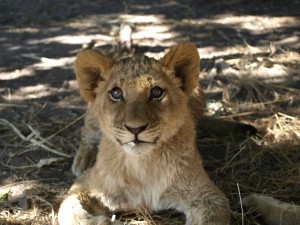 Which way will I die?
The lion has become a hot commodity and the ways in which profits can now be made out of them are simply spiralling out of control.
The reality is that there are fewer lion “units” (prides) remaining in the wild than elephants, rhinos or tigers and the lion trade, which still has both legal and illegal elements, is a gigantic industry. Rhinos and elephants suffer from poaching and legal trophy trade. Tigers suffer from poaching.
Lions, by contrast, suffer from all of this plus many more (and before you read this list, keep in mind that there are already FEWER lions than most other iconic species under threat):
- Trophy hunting – around 950 lion trophies are exported from Africa each year (10 year average)
- Human/lion conflict – Kenya estimates it loses around 100 lions a year to conflict issues
- Legal lion bone trade from South Africa – figures for 2011 show 2,130 bones, 42 bodies, 141 claws, 498 skeletons, 116 skins, 121 skulls, mainly to China and Laos.
- Illegal lion poaching – figures of 5 lions a day are being quoted
- Illegal cub smuggling – difficult to quantify but cited as significant in Zambia, Kenya and Botswana
- Legal live lion trade from South Africa – figures from 2011 show 195 lions exported
- Snaring – difficult to quantify but part of the 100 lions lost each year in Kenya, for example.
- Loss of habitat – every year, the lion’s territory is reduced further as communities sell off parcels of land for commercial gain and as Government owned land is sold to the highest bidder.
- Loss of prey – the buoyant bush meat trade in particular leaves the lion with reduced natural prey
- Disease – 95% of studied lion populations suffer from FIV (Feline Immunodeficiency Virus) which renders the lion increasingly susceptible to introduced diseases such as Bovine Tuberculosis and Canine Distemper. 1000 lions were wiped out in the Serengeti in 1984/5 from Canine Distemper. bTB is a major threat in Kruger today.
- Exotic meat trade – this is a new industry starting in the USA which could develop – lion burgers
- Local lion meat consumption - lion meat is eaten for various medicinal purposes in parts of Nigeria, Zambia, Malawi and Zimbabwe
This is an enormous crisis and it is largely unreported. Together we can change this.
If you have not already signed up to our mailing list, you can add your name here and keep up to date with our ongoing work and, most importantly, DONATE to support our work to conserve the remaining fragile lion and wildlife populations.
|




